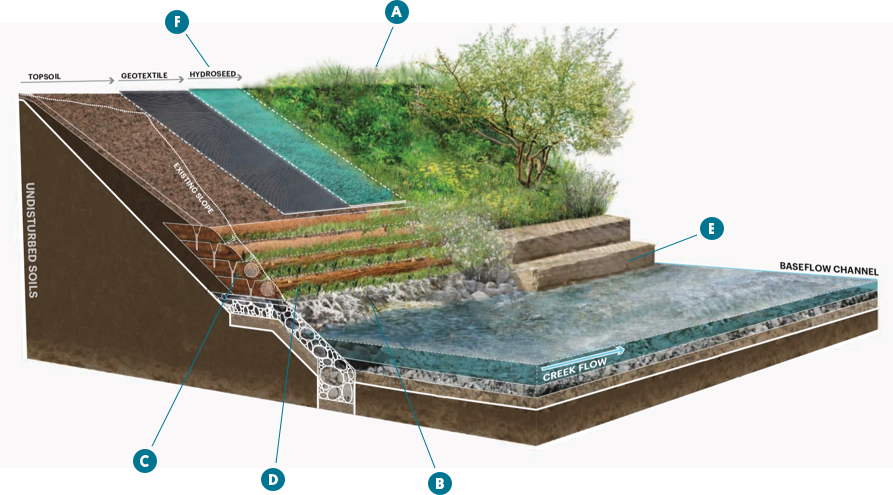Creek Restoration
Restoring Waller Creek
We believe Waller Creek can do far more than exist in the intensifying urban core of our city — it can flourish. But only with the support and expertise of our numerous partners.
Over time, the health of this historic creek’s diverse ecosystem has been challenged by intense development. Herons perch on drain pipes that empty directly into the waters. Sunfish and goldfish swim in polluted runoff. Turtles poke up between styrofoam cups, and saplings bend under sodden trash bags. With floods and droughts mixed in, the results are plain: poor water quality, a crumbling creek bedrock, and eroding banks.
Throughout Waterloo Greenway, we’re transforming lower Waller Creek from a piece of rundown infrastructure into a natural oasis — one that flows across city divides and leaves greater health and happiness for every Austinite in its gentle wake. Every step of the way, we’re committed to improving environmental conditions and establishing collaborative approaches to monitoring and stewardship.
Waterloo Greenway Environmental Goals
Our overarching environmental goals for Waterloo Greenway provide a focus for establishing the environmental metrics and immediate priorities for the project. They’re guiding elements that allow us to calibrate our decisions, communicate to the community, and measure our results.
- Build an ecologically robust and resilient urban creek, riparian corridor, and park system
- Steward the ecological system built along lower Waller Creek long term
- Connect all people to nature
- Cultivate the next generation of environmental stewards
- Become a national leader in the fields of environmental stewardship and urban greenway projects
Re-worked native soils graded to 2.5:1 or flatter (where feasible) and planted with groundcover, understory and upper story
Natural or salvaged, angular boulders 18” – 24” with a specific gravity of ≥2.4
6”-12” nondegradable geotextile planted with aggressive native mix. Composed of re-worked native and/or engineered soils
0.5”-3” diameter, 1.5’-5’ long, locally harvested, 2-5 yr old branches installed so tip reaches very moist or wet soil. Recommended downstream of Cesar Chavez only
Locally quarried or salvaged, can be used in place of rip rap and for growth of vines, ferns, most, and other herbaceous plants
Applied above baseflow with fast-growing, deep-rooted perennial natives & cover
Reconstructed Failed Slopes

But First, the Waller Creek Tunnel
Muddy floodwaters surging over eroded stream banks kept washing away decades of hope that Waller Creek and the surrounding area could be lovingly and lastingly restored. Then, in 2011, the City of Austin embarked upon a mile-long underground tunnel that captures and redirects excess rainwater from Waterloo Park down to Lady Bird Lake.
Now complete and operated by the City of Austin’s Watershed Protection Department, Waller Creek Tunnel removes more than 28 acres of downtown from the floodplain, keeps people safe from flash flooding, and protects dozens of structures and roadways. It also eases bank erosion during wet times and gently pumps lake water back into the creek during drier ones.
Waller Creek Tunnel removes more than 28 acres of downtown from the floodplain.
